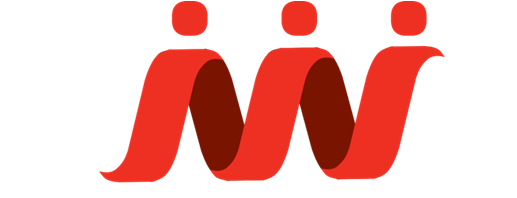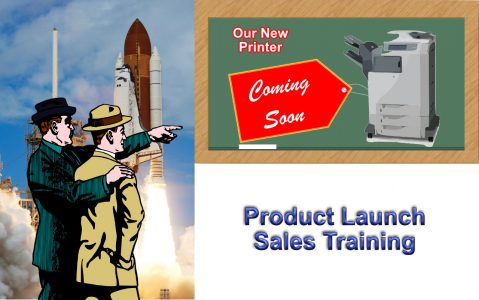Research shows that many companies make these common mistakes and sabotage the launch of valuable and innovative products. Don’t let your hard work on design, product development and production fizzle and flop with launch training mistakes.
Training sales reps to give the right message to the right customer is an important element in a successful product launch.
Many companies provide brochures, price sheets and product description and then leave sales reps on their own to develop their pitch. But, effective new product launch sales training is much more than just sending them a description and photos of the new product and pricing. Of course, they need those specifications and the pictures help put the product in their mind. But they need far more information than that.
What Should Be Included in the Training?
To make great sales calls, here are some things the rep needs to know:
- Applications: What are the best uses of this new product? Also, there may be some applications that should be avoided as they are not the right fit. What do the target prospects do in their business and how will the product help them?
- Product Positioning: How does this product fit within your portfolio of products?
- Markets and Opportunities: Who are the prospects for whom your product would be most useful and where do you find them? Also, who’s the best person to contact for each prospective customer? Once the rep has identified a prospect, the rep needs to have enough knowledge and skill to investigate their business. They will need to uncover to help and understand their business, problems, issues, and opportunities. They need to be confident your new product will resolve those issues and improve their business.
- Competitive Products: What similar products are already out there? In addition to listing them and providing some specifications, you would want to tell pros and cons of those products and how does your new product beat them?
- Product Demonstration: The demo naturally contains several jobs to highlight the features and applications of your new product and related software. However, it must always be customized to reflect the customer’s specific needs and requirements. It’s critical to add the advantages and benefits the product will bring to them.
- Objection Handling: During most sales interactions your sales reps will no doubt encounter some form of resistance – usually as “objections”. They need to understand and employ the most effective objection-handling methods. In addition to teaching them those best methods, you should also explain these for your new product:
- What are the most common objections they’ll meet?
- What’s the best response for each of them?
Leaving your sales reps to learn and develop that material on their own is very risky. So, you should prepare a comprehensive training course that covers all that information.
One Path is not Enough
Just like one size does not fit all in clothes, one path does not fit all in training. sales manager, tech support and customer trainers need unique training to fit their roles and responsibilities.
- Sales Managers: Sales Managers need have enough product and market knowledge to help sales reps create value propositions and write creative and engaging talk tracks. They also need to feel confident helping sales reps classify prospects into those who are the innovators who want the latest products, those at risk for churn, those who are unhappy and those happy customers ready to move up.
- Technical Support: Yes, the technical team does need many of the things that sales reps require but they also require different information. Technical support people will need to be able to respond to complex operational issues in different environments. They must be ready to be problem solvers. Hands-on training is beneficial to help them get comfortable with the product and how it works.
- Customer Trainers: Customers trainers will need to quickly master how to use the product and communicate the “how to” activities to the customer. They will have to know the full range of applications and functionalities. They also need hands-on training.
Launch Training Delivery
Many companies provide new product training in just one or two ways such as product sales training guide booklets, webinars, or live training with the new product present. But another excellent and more effective way to distribute that training these days is through online training. The value with this approach is that the sales reps and associates can train at their convenience and they can go back and access the e-learning content at any time after they complete the course if they want to review the material.
Blended learning is an excellent alternative. It allows you to break the training into manageable chunks and help employees manage their time. Blended learning also allows you to break training into phases such as pre-launch, launch, and post-launch. It provides the opportunity to localize the training by area or country.
Launch Training Follow Up
Lack of follow up is one of the major reasons for lack of sales. Sales reps often have a good first conversation with the client and think that things are going well but when they call for the next appointment, the customer is not available. So, they drop the client to the bottom of the list and move to the next opportunity. In other situations, sales reps encounter tough questions or application challenges. Follow-up training can resolve both of those issues and turn lost opportunities into sales successes.
Top-Down Support and Include Everyone
Training needs to be supported from the top by providing the budget and the time for training. The whole company needs to know about the product. Someone’s next door neighbor may just be a prospect and ask about the prospect. So everyone needs at least an overview training whether online or in a company meeting.
Launch Training Sample
Here’s a link to a sample of an e-learning course I created for RTI Digital when they launched their Vortex 4200 in 2014. Sadly, they closed out in 2016. But the course is a great example of what we can do for you when you launch your new products. It covers the topic areas mentioned above (except the demo script and follow-up webinar).
About the Author
John Switzer was the Senior Technical and Training Consultant for Events Plus of Northern Virginia and is also the owner of Miller’s Basin, a technical training, documentation, and consulting company near Rochester, NY.
John was also a Worldwide Program Manager on the Xerox Wide Format Business team where he had world-wide responsibility for sales and analyst training development and delivery with wide experience as a classroom instructor.
Also an electrical engineer, he designed several U.S. Navy shipboard communications systems. John creates innovative e-learning courses, webinars, and on-line training videos for use by clients both internally and externally.
John’s business partner, Phyllis Mikolaitis, is a sales coach, author, and speaker with over 30 years’ global experience. She is dedicated to taking you beyond the typical “how to” courses to the heart of persuasion techniques incorporating insights and stories to win the sale. Phyllis has also had training in Leadership Through Quality, Six Sigma and is now working with organizations on Lean and People-Centered Leadership.
Contact Us
If you’d like to discuss product launch training further or see a sample of online customer training, please contact us and we’d be happy to discuss it with you and share a link to a sample customer training course.
John Switzer
Call John at: 585-329-9948 or by email at: jswitzer@salestrainingsolutions.com
Phyllis Mikolaitis
Call Phyllis at: 703-819-5872 or by email at: phyllis@salestrainingsolutions.com

